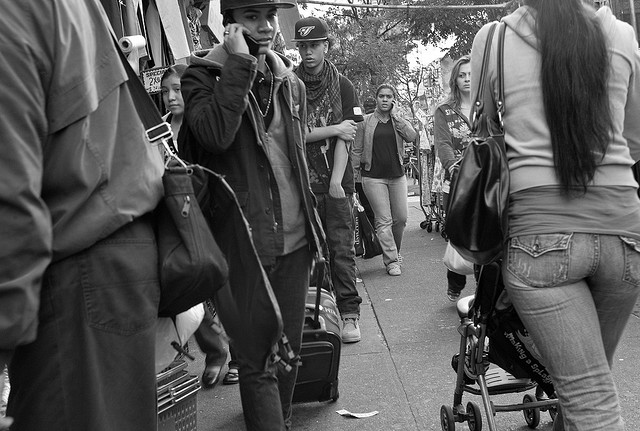
There’s an unwritten rule followed by nearly all city dwellers—never make eye contact. If you attempt to do so, your glance will be met with utter disregard. You do not exist, other than being an object to avoid. I learned this the hard way. Upon moving to San Francisco from Minnesota—the friendliest of all possible places—I would attempt to make eye contact with strangers on the street out of courtesy. In Minnesota, this is commonplace. There, my glances were often met with a polite smile or a courteous “hello.” In San Francisco—even on streets that were anything but crowded—they were ignored with complete indifference.
Imagine, then, my surprise when I learned of San Francisco’s reputation as a friendly city. If San Francisco is considered friendly, I thought, then I’m steering clear of New York. I mused that such indifference to others must be an artifact of city life. That’s not to say there aren’t friendly people there—it’s true that San Franciscans are a generally genial bunch once you get them off the sidewalk, as are the New Yorkers I’ve met and nearly every other person from a big city. But when I’m in a small town, things sure do feel different. Walking down the street is no longer a sterile affair. It’s no family reunion, but it is degrees warmer than in cities. Still, my own experiences weren’t enough to convince me that this could be a universal trend.
Luckily, my hunch was proved correct the other day by a study which compared the rates of eye contact among people in central Philadelphia, suburban Bryn Mawr, and rural Parkesburg. The study’s authors parked two college students—a guy and a girl—outside a post office and a store in each location for two hours. The students counted the number of people who made eye contact and if anyone said “hello,” “how are you,” or the like. Lo and behold, rural Parkesburg held true to the small town stereotype. Between 70 and 80 percent of passersby glanced at the stationary students in the Parkesburg, while just 10 to 20 percent did in Philadelphia. Bryn Mawr’s pedestrians fell predictably in the middle, with around 40 to 50 percent making eye contact.
The rural types were also much more likely to say something to the strangers. One quarter of people in Parkesburg opened their mouths in greeting, while just three percent did for Bryn Mawr and Philadelphia combined. (The city center was by far the least friendly—only one person said something to each person at both the post office and the store.) In addition, everyone who did say something did make eye contact.
The study’s authors contemplated a few possible explanations for why the city dwellers were so hesitant to make eye contact. They favored the sensory overload hypothesis—that people in big cities are surrounded by too many people, noises, and other distractions—though they also speculated that city folk may fear strangers more or that small town people may be more curious about strangers. They also touched on the idea that city people are more hurried than either suburban or small town people. This notion has been covered both before and since by a number of different researchers. In general, people in larger cities do tend to walk faster, so there may be some truth to this.
Whatever the reason, I admit I exhaled a slight sigh of relief when I discovered that science confirmed my suspicions. San Franciscans, New Yorkers, Londoners—no matter how friendly they are underneath, suffer the same aversion to eye contact as other big cities. Small towns do feel friendlier.
Sources:
Newman, J., & McCauley, C. (1977). Eye Contact with Strangers in City, Suburb, and Small Town Environment and Behavior, 9 (4), 547-558 DOI: 10.1177/001391657794006
Bornstein, M., & Bornstein, H. (1976). The pace of life Nature, 259 (5544), 557-559 DOI: 10.1038/259557a0
Bornstein, M. (1979). The Pace of Life: Revisited International Journal of Psychology, 14 (1), 83-90 DOI: 10.1080/00207597908246715
Wirtz, P., & Ries, G. (1992). The Pace of Life – Reanalysed: Why Does Walking Speed of Pedestrians Correlate With City Size? Behaviour, 123 (1), 77-83 DOI: 10.1163/156853992X00129
Photo by Susan NYC.